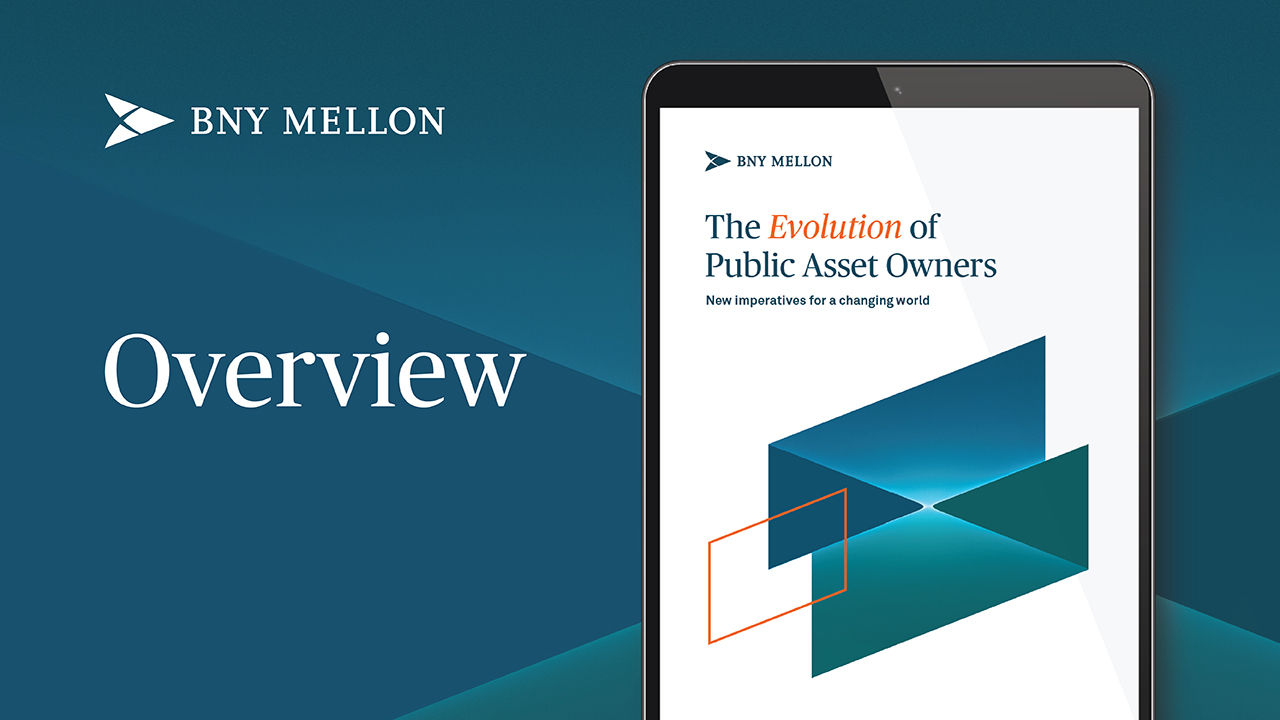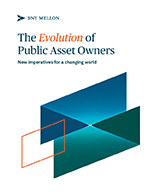A Critical Moment for Public Asset Owners
Executive Summary

Watch a short video.

Our extensive research reveals public asset owners' ambitions, challenges and outlooks, in order to help them adapt to increasing demands, learn from others’ experiences and ultimately accelerate their ambitions and impact.
Yet these changes also represent an opportunity. Public institutions that succeed in breaking out of old patterns will play a new role in financial ecosystems and amplify the impact they can have on society more broadly. To understand this transformation, BNY Mellon interviewed more than 90 senior leaders from almost 50 institutions globally (excluding the United States), representing nearly US$9 trillion in assets. In addition, we collaborated with the Official Monetary and Financial Institutions Forum (OMFIF), a leading think tank among public investors, to survey public asset owners on their operating models. We can summarize our findings as follows:
Asset Servicing Global Disclosure
© 2022 The Bank of New York Mellon Corporation. All rights reserved.

BNY, one of the world’s largest alternative asset servicing firms, was named as the winner of the ‘Custodian Service of the Year’ Category at the 2024 Private Equity Wire European Credit Awards. Elliott Brown, Global Head of Alternatives for Fund Services, outlines some of the challenges and opportunities in the private credit space.

Virtual accounts have emerged as a strategic solution for corporate treasurers to address complexities associated with traditional bank account structures and seeking smarter ways to manage liquidity, improve working capital and increase operational efficiencies.

The Dim Sum bond market – comprised of offshore, renminbi denominated bonds issued outside Mainland China, have become an increasingly attractive capital raising channel.

Banks must strike a careful balance between helping to fuel economic activity with loans and keeping their balance sheets on solid ground.